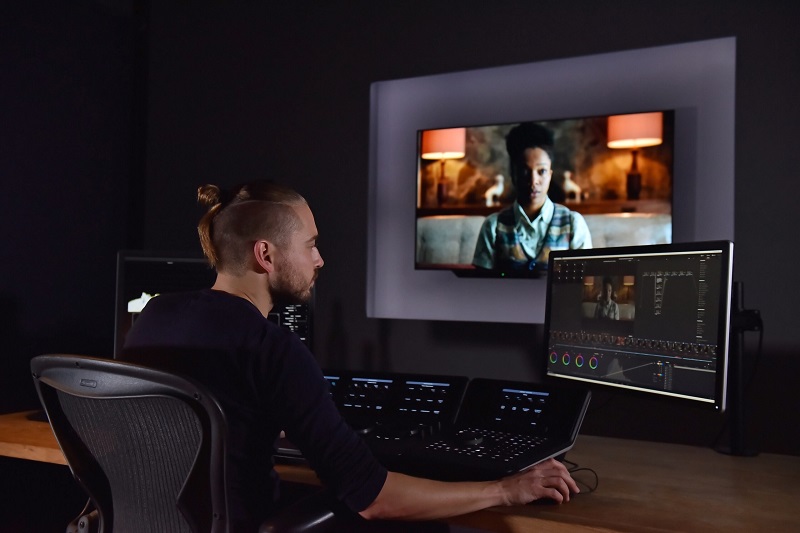Filmmaking is a complex art form that combines various elements to create a visual narrative that captivates audiences. One of the most crucial aspects of this process is film colour grading, which can enhance the mood, atmosphere, and overall visual storytelling of a project. But what is colour grading, and how does it contribute to the overall aesthetic of a film? How do filmmakers collaborate to achieve the desired look and feel for their projects? This article will delve into the art of film colour grading and its significance in enhancing visual storytelling.
 |
| Film Colour |
The Basics of colour Grading
colour grading is the process of altering and enhancing the colours of a film or video to create a specific look, mood, or atmosphere. It is a vital part of the post-production process and is essential for achieving a polished, professional, and cinematic look. The process involves adjusting the colour balance, contrast, saturation, and other colour-related attributes of an image to achieve the desired aesthetic. The primary goals of colour grading are to:
• Correct any colour imbalances or inaccuracies
• Create a unique visual style that complements the story and mood of the film
• Enhance the visual storytelling by evoking specific emotions through colour
• Establish consistency across different shots and scenes
colour grading is often confused with colour correction, which is a preliminary step in the process. colour correction involves fixing any technical issues with the footage, such as overexposure, underexposure, or white balance issues, to ensure accurate and consistent colours throughout the film. Once the footage has been colour corrected, the colour grading process can begin.
Techniques and Tools of colour Grading
There are various techniques and tools available to filmmakers when it comes to colour grading. Here, we will explore some of the most common methods and software used in the industry.
1. Primary and Secondary colour Grading:
Primary colour grading involves adjusting the overall colour balance, contrast, and saturation of an image. Secondary colour grading allows for more precise adjustments, targeting specific colours or areas of the image to create a more refined look.
2. colour Wheels:
colour wheels are a common tool used in colour grading software, allowing for the adjustment of the hue, saturation, and brightness of the shadows, midtones, and highlights of an image.
3. Curves and Histograms:
Curves and histograms enable more precise control over the tonal range and contrast of an image, allowing for adjustments to the brightness and colour balance in specific areas of the tonal range.
4. Masks and Tracking:
Masks and tracking tools allow for the isolation of specific areas or objects within a scene, enabling targeted adjustments to colour and other attributes without affecting the rest of the image.
5. Look-Up Tables (LUTs):
LUTs are predefined colour transformations that can be applied to footage to achieve a specific look or style. They can be used as a starting point for colour grading or as a reference for matching the look of different cameras or scenes.
Some of the most popular colour grading software includes:
• Adobe Premiere Pro: A widely used video editing software that includes robust colour grading tools and integration with other Adobe products.
• DaVinci Resolve: A professional colour grading software that offers advanced tools and features for colour correction and grading.
• Final Cut Pro X: Apple's professional video editing software that includes built-in colour grading tools and support for third-party plug-ins.
• Avid Media Composer: A professional video editing software that offers colour grading tools and integration with third-party colour grading software.
The Importance of Collaboration
Filmmaking is a collaborative process, and colour grading is no exception. It is essential for directors, cinematographers, colourists, and other members of the production team to work together to achieve the desired look and feel for a film. Communication and collaboration are crucial during pre-production, production, and post-production to ensure that the visual storytelling aligns with the director's vision and the film's narrative.
During pre-production, the director and cinematographer should discuss the desired look and mood of the film, referencing visual references and establishing a colour palette. This conversation will inform the lighting, camera settings, and other technical aspects of the production.
During production, the cinematographer and camera crew must ensure that the footage is accurately exposed and balanced to facilitate the colour grading process. Shooting with a flat colour profile or using a colour chart can aid in achieving consistency across different shots and scenes.
During post-production, the colourist works closely with the director and editor to adjust the colours, contrast, and other aspects of the footage to create the final look of the film. This process requires a keen eye for detail, a thorough understanding of colour theory, and a strong grasp of the film's narrative and emotional goals.
Conclusion
The art of film colour grading is a critical aspect of visual storytelling that can greatly enhance the mood, atmosphere, and overall aesthetic of a film. By understanding the basics of colour grading, utilizing various techniques and tools, and fostering collaboration among the production team, filmmakers can create visually stunning and emotionally resonant films that captivate audiences. As technology continues to evolve and the demand for high-quality visual content increases, the importance of mastering the art of colour grading in filmmaking cannot be overstated.

No comments:
Post a Comment